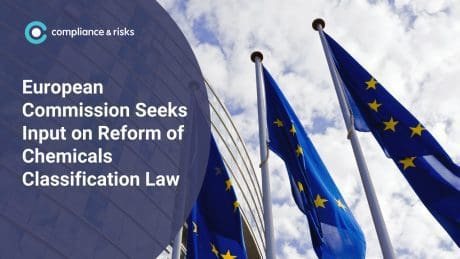
EU REACH: Hazardous Chemical Notification Failure

 A study on the communication in the supply chain of information on Substances of Very High Concern (SVHC) has been published. The study was carried out by market surveillance authorities in 15 Member States who assessed all aspects of information communication of SVHCs including whether companies had management systems and how they obtain SVHC data from suppliers. The study undertaken by the Forum for Exchange of Information on Enforcement, which is the network of authorities responsible for the enforcement of chemical regulations in Europe, checked 682 articles from 405 companies. The project targeted consumer articles (i.e. clothing, footwear and home textiles), electronic products, interior articles and plastic and rubber articles.
A study on the communication in the supply chain of information on Substances of Very High Concern (SVHC) has been published. The study was carried out by market surveillance authorities in 15 Member States who assessed all aspects of information communication of SVHCs including whether companies had management systems and how they obtain SVHC data from suppliers. The study undertaken by the Forum for Exchange of Information on Enforcement, which is the network of authorities responsible for the enforcement of chemical regulations in Europe, checked 682 articles from 405 companies. The project targeted consumer articles (i.e. clothing, footwear and home textiles), electronic products, interior articles and plastic and rubber articles.
The study found that most companies relied on information provided by suppliers, but 95 companies actively asked suppliers for information and 39 carried out their own chemical analysis. The study also found that 117 of the companies had assessment schemes for suppliers (e.g. to assess trustworthiness). The main work of the study was to check the 682 articles for SVHCs (either by chemical analysis by the authorities – 529 of the articles – or from information provided by the companies) and this focused on 11 types of SVHCs. 51 articles were found to contain phthalates; 12 contained SCCP (which is now banned by the EU POPs Regulation), 12 contained lead and one contained cadmium. The study assessed what actions suppliers had taken when SVHCs are present, however for 78 of the 84 articles, the suppliers were unaware of the SVHCs, as their procedures had not been sufficiently effective to obtain this information. The REACH Regulation is unclear on what exactly suppliers are required to do to obtain information, however ECHA guidance does state that companies need to be proactive. The authorities may regard not providing SVHC information to customers when they are present in articles as non-compliant, even if the supplier is unaware of them.
The study report states that the most common methods used to communicate SVHC information was by labels (the most common method), in accompanying documents and using pictograms on labels. Only nine companies provided additional safe use information.
One issue also identified by the study was that only 50% of the companies had implemented the European Court of Justice Decision on the definition of articles. As a result, they may not declare the presence of SVHCs due to an incorrect interpretation of the legislation.
Suppliers are obliged by Article 33(2) of REACH to provide SVHC information to consumers only if this is requested and this should be provided within 45 days. Only 5 companies had received requests from consumers (46 received no requests) but only one managed to meet the 45 day deadline. The report states that this is a high rate of non-compliance.
Of the articles inspected only 12% contained SVHCs in concentration above 0.1% w/w; therefore requiring declaration. In these instances the candidate list substance name was communicated in the majority of cases when the supplier was aware of them. Article 33 of REACH requires suppliers to provide sufficient information to allow safe use and as a minimum the name of the substance. It is RINA’s experience that it is seldom necessary to provide specific safe use instructions when SVHCs are present in most types of articles as they will be safe to use as specified by manufacturers instruction manuals or in the ways that would normally be expected for the articles. The result that only nine companies provide safe use information is therefore as expected. What is more alarming though is the large number of articles found that contain SVHCs which the company was unaware, suggesting that more effort is needed to obtain SVHC information.
Recommendations from the report for businesses highlighted the need for the improvement of communication in the supply chain (including those outside the EU) to gather the information, relying upon active engagement with the supply chain. Good practice has been highlighted by the report when dip checks have been undertaken by businesses in their supply chains.
The results of the report will be analysed by the ECHA secretariat and the forum with consideration given to actions to improve the situation.








